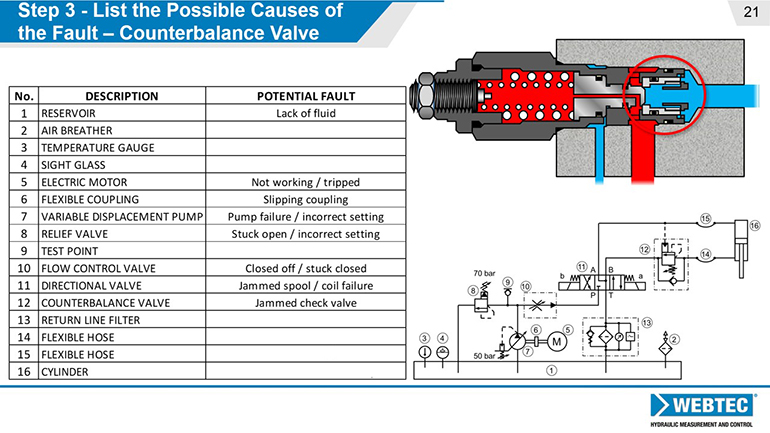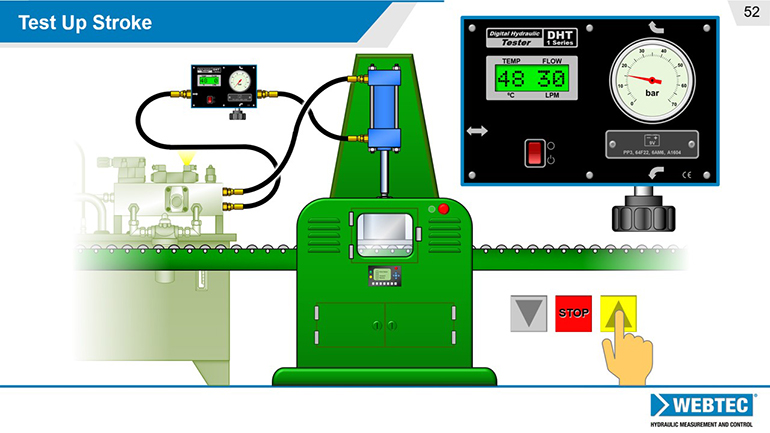Contributed by Steve Skinner, on behalf of Webtec LLC
It’s probably fair to say that modern machinery is less prone to unexpected breakdowns than its counterparts of 30 or 40 years ago. This is due mainly to an increased emphasis on reliability engineering together with the availability of low-cost sensors, monitoring devices and digital communications. But despite these improvements in processes and equipment, it’s still not possible to guarantee that breakdowns will be eliminated altogether. Maintenance engineers therefore still need to have both the skills and diagnostic equipment necessary to avoid costly and potentially dangerous machine breakdowns. But if breakdowns are now a more infrequent occurrence, then maintenance engineers will have had less experience at handling them compared to their colleagues of 30 or 40 years ago. Effective training in problem solving skills is therefore now more important than ever.
Whenever machinery does malfunction or break down completely, there is often a strong expectation to ‘get out there and do something’ since it’s likely that any breakdown is going to cost money. Production may be lost, crops could spoil in the field, penalty clauses may be invoked due to a job not being finished on time and so on. So there is always a strong temptation just to jump in and be seen as doing something and hope that it may solve the problem. If the same fault has occurred before, it’s very easy to assume that it must be caused by the same problem again. If the fault was rectified by changing the pump last time, then maybe it will again – or maybe not!

The process of troubleshooting on any machine should follow a logical, step-by-step process which starts with finding out as much about the nature of the fault as possible. When conducting a medical diagnosis, a doctor will first question a patient about the symptoms of their illness or injury before carrying out any tests. Maintenance engineers should adopt a similar approach by gathering as much information as possible from the machine operatives about the nature of the machine breakdown. Apart from faults which are immediately obvious, such as a burst hose for example, the next step is to understand how the machine and its associated controls operates. Until it’s known how something works, it is difficult to think about what could go wrong with it. As well as questioning the machine operator, this will inevitably involve a paperwork exercise of reading machine manuals, studying circuit diagrams, etc. This is a vital step in the process, but again the temptation (or request) to ‘get out there and do something’ is often very compelling.
Having understood the machine operation, the next step is to draw up a list of possible causes of the problem. Some of the possible causes on the list will be more likely than others and some will be easier to check than others, so the list should also be prioritized based on considering the most likely or easily checked causes first of all. A preliminary examination can then be carried out on each of the possibilities on the list. This stage will involve looking for any obvious signs of a malfunction such as abnormal noise or heat, components incorrectly adjusted or leaking, loose wires or connectors, etc. So, the preliminary check need not involve any additional equipment or instrumentation other than that already installed. Of course, rigorous safety procedures should be followed at this stage so as not to touch anything that may be excessively hot or allow pin-hole fluid leaks to penetrate the skin for example. Provided the list of possible causes is comprehensive and the preliminary check is carried out diligently, many machine faults can often be diagnosed at this stage of the process.

If the cause of the fault is less obvious and can’t be located during the preliminary check, then additional instrumentation may be required. Maintenance engineers now have available a wide selection of diagnostic equipment ranging from simple plug-in pressure gauges to thermal imaging cameras which can detect sources of excess heat generation. Portable and on-line equipment, such as fluid condition monitoring instruments, also exist to help diagnose the root cause of component failures.
Although it may no longer be realistic to expect maintenance engineers to be fully familiar with the operation of all the machines under their care, if they have been trained in a logical troubleshooting process then no matter what problem arises, they should be able to locate and rectify the fault in a speedy and efficient manner.
This step-by-step approach is explained in Webtec’s Troubleshooting video which has been designed to contribute towards such training and is the fifth in a series of educational titles produced by Webtec. It explains a logical troubleshooting process with the aid of a worked example and highlights how even a quite difficult fault can be diagnosed by following the correct procedure and using the appropriate instrumentation.
To view this and the full series of training videos please visit Webtec’s Education page at en.webtec.com/education/training-videos/.
Filed Under: Maintenance, Mobile Hydraulic Tips